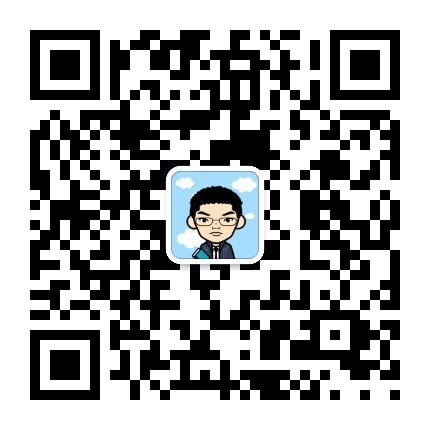
本网站不提供下载链接,喜欢看书的朋友请关注公众号:【lennylee的碎碎念】(lennyleede),首页回复:授人以渔,自动获取搜索资源的方法。
内容简介:
As a scientist, Albert Einstein is undoubtedly the most epic among 20th-century thinkers. Albert Einstein as a man, however, has been a much harder portrait to paint, and what we know of him as a husband, father, and friend is fragmentary at best. With Einstein: His Life and Universe, Walter Isaacson (author of the bestselling biographies Benjamin Franklin and Kissinger) brings Einstein’s experience of life, love, and intellectual discovery into brilliant focus. The book is the first biography to tackle Einstein’s enormous volume of personal correspondence that heretofore had been sealed from the public, and it’s hard to imagine another book that could do such a richly textured and complicated life as Einstein’s the same thoughtful justice. Isaacson is a master of the form and this latest opus is at once arresting and wonderfully revelatory. –Anne Bartholomew
作者简介:
Walter Isaacson, the CEO of the Aspen Institute, has been chairman of CNN and the managing editor of Time magazine. He is the author of Einstein: His Life and Universe; Benjamin Franklin: An American Life; and Kissinger: A Biography, and the coauthor of The Wise Men: Six Friends and the World They Made. He lives in Washington, DC.
Biography
Rhodes Scholar, historian, and bestselling author Walter Isaacson began his distinguished career as a journalist — first for London’s Sunday Times, then for The Times-Picayune/States-Item, published in his hometown of New Orleans. He joined Time magazine in 1978, working his way up from political correspondent to managing editor in a little less than two decades. He served for two years as chairman and CEO of the cable TV news network CNN; then, in 2003, he became president of the Aspen Institute, an international nonprofit organization “dedicated to fostering enlightened leadership and open-minded dialogue.” In the wake of Hurricane Katrina, he was appointed vice-chairman of the Louisiana Recovery Authority, and he serves on a number of policy-making boards and councils.
In literary circles, Isaacson is best known as the writer of magisterial biographies, scholarly and meticulously researched, yet immensely entertaining. His first book, however, was a collaborative effort. Co-written with award-winning journalist Evan Thomas, and published in 1986, The Wise Men: Six Friends and the World They Made explores the lives of six men who shaped government and public policy in the years following WWII. Examining an era too recent to be called history and too distant to qualify as current affairs, the book received mixed reviews but was universally praised for its ambitious scope and elegant style.
Isaacson’s subsequent biographies, all solo efforts (and all critically acclaimed), have chronicled the lives of such disparate figures as Henry Kissinger, Benjamin Franklin, and Albert Einstein. He explains what has drawn him to such widely divergent subjects — men, who on the surface would appear to have very little in common: “I like writing about people with interesting minds. I try to explore the various aspects of intelligence: common sense, wisdom, creativity, imagination, mental processing power, emotional understanding, and moral values. Which of these traits are the most important? How do they make someone an influential or significant or good person?”
CONTENTS
Acknowledgments
Main Characters
CHAPTER ONE
The Light-Beam Rider
CHAPTER TWO
Childhood, 1879-1896
CHAPTER THREE
The Zurich Polytechnic, 1896-1900
CHAPTER FOUR
The Lovers, 1900-1904
CHAPTER FIVE
The Miracle Year: Quanta and Molecules, 1905
CHAPTER SIX
Special Relativity, 1905
CHAPTER SEVEN
The Happiest Thought, 1906-1909
CHAPTER EIGHT
The Wandering Professor, 1909-1914
CHAPTER NINE
General Relativity, 1911-1915
CHAPTER TEN
Divorce, 1916-1919
CHAPTER ELEVEN
Einstein’s Universe, 1916-1919
CHAPTER TWELVE
Fame, 1919
CHAPTER THIRTEEN
The Wandering Zionist, 1920-1921
CHAPTER FOURTEEN
Nobel Laureate, 1921-1927
CHAPTER FIFTEEN
Unified Field Theories, 1923-1931
CHAPTER SIXTEEN
Turning Fifty, 1929-1931
CHAPTER SEVENTEEN
Einstein’s God
CHAPTER EIGHTEEN
The Refugee, 1932-1933
CHAPTER NINETEEN
America, 1933-1939
CHAPTER TWENTY
Quantum Entanglement, 1935
CHAPTER TWENTY-ONE
The Bomb, 1939-1945
CHAPTER TWENTY-TWO
One-Worlder, 1945-1948
CHAPTER TWENTY-THREE
Landmark, 1948-1953
CHAPTER TWENTY-FOUR
Red Scare, 1951-1954
CHAPTER TWENTY-FIVE
The End, 1955
EPILOGUE
Einstein’s Brain and Einstein’s Mind
Sources
Notes
Index
· · · · · · (收起)
原文摘录:
刚刚过去的一个世纪将会因其力图打破与古典传统的联系而为历史铭记,而下一个时代将会着力培养创造性,这是科学创新所不可或缺的。每当我们回想和展望这一切时,我们这个时代最引人注目的偶像便会突显出来:这是一个从压迫中挣脱出来的流亡者,和蔼而亲切。其散乱的头发,闪烁的目光,迷人的个性,超凡的才智,所有这些都使他的面孔成为一个象征,名字成为天才的同义语。阿尔伯特 • 爱因斯坦,这位富有非凡想象力的探索者,对自然所蕴含的和谐笃信不疑。他迷人的经历可以清楚地证明创造性与自由息息相关,亦可折射出现时代的胜利和喧嚣。 (查看原文)
bpmf
2赞
2019-07-11 20:15:42
—— 引自第2页
·With the advent of quantum mechanics in the 1920s, the reality of the photon became a fundamental part of physics. (查看原文)
[已注销]
1赞
2014-05-14 23:03:09
—— 引自第101页